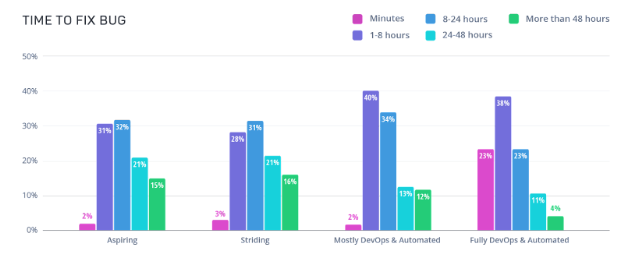Modern software development can often feel like a Catch-22: to keep customers happy, companies must deliver new features faster. But deliver too fast without enough testing and bugs can slip into production, frustrating the customers who eagerly awaited the new feature in the first place. This paradigm often pits quality assurance against developers as they deliberate over the balance between speed and quality.
Adding to the stressful mix is the pressure from business leaders to make engineering teams as lean and efficient as possible to navigate increasingly unpredictable market conditions and widespread supply chain disruptions. In the face of these demands, software teams need to rethink how they approach quality to maximize their output and minimize the risk of customer-facing defects. They need to adopt quality engineering principles, which aim to integrate testing throughout the software development life cycle in order to deliver a positive user experience.
Testing Early and Often Minimizes Effort to Fix Bugs
When continuous testing as part of a quality engineering practice is an integral part of the entire development process, the overall risk of major defects being discovered at the last minute or in production is greatly reduced. Fully DevOps teams that have embraced continuous testing are almost three times more likely to identify defects early in development. This means that fully DevOps teams are much less likely to be frantically rewriting code days (or even hours) before a release date.
When defects are discovered earlier in development, resolving them is a faster, simpler process:

Most DevOps teams that test early and often can fix bugs within a single business day, and roughly a quarter can find solutions in minutes. In contrast, the bulk of aspiring DevOps organizations are spending up to a full work week resolving bugs. Discovering defects earlier in development reduces the time and effort needed to resolve issues, making software development teams more efficient and more focused on customer retention.
Harnessing AI and Machine Learning for Efficient Development
Though many organizations are struggling to successfully implement AI – an estimated 85% of AI projects fail to deliver on their goals – testing is a prime opportunity to showcase the value of AI tools. According to Gartner’s Market Guide for AI-Augmented Software Testing Tools: “By 2025, 70% of enterprises will have implemented an active use of AI-augmented testing, up from 5% in 2021.” Development teams looking to unlock faster development with AI would be smart to consider starting AI adoption with high-impact areas like software testing.
AI accelerates software testing by reducing the amount of rote work of test maintenance through autohealing — a capability that enables tests to evolve with the product without requiring hours of quality engineering effort. When there’s less time needed for test maintenance, quality engineers can spend more time performing exploratory testing, collaborating with developers, or improving test coverage. The result: faster delivery cycles that don’t sacrifice the user experience. Gartner predicts that: “By 2025, organizations that ignore the opportunity to utilize AI-augmented testing will spend twice as much effort on testing and defect remediation compared with their competitors that take advantage of AI.”
In other words, investing in AI-backed testing tools that enable software teams to deliver quality products more efficiently is investing in a competitive advantage.
Clear Communication Minimizes Wasted Engineering Hours
When it comes to rectifying high priority bugs, speed and clear communication are critical to maximize engineering effort. The longer a development team spends trying to figure out what tests failed and why they failed, the more hours are spent chasing information.
Leaning into tools that make sharing information between quality engineers and developers significantly reduces the effort needed to resolve bugs. Considering that 26% of knowledge workers say that app overload slows them down at work, this single step can dramatically improve how engineering organizations collaborate on quality. Even better, simply standardizing quality workflows, communication, and tools is a low-cost way to make software development teams more efficient.
Quality engineering is one of the few common threads throughout the SDLC, functioning as a common thread between code and the customer. As more engineering organizations look to streamline how quickly they build new features – without alienating customers through poor user experiences — investing in software testing is a high impact opportunity that makes everyone’s lives easier.
To read the full Gartner report, download it here.







